Contemporary Literature 2000–2012, From Post-9/11 Trauma to Global Talkbacks—The Era Where Literature Found New Skins, Screens, and Scream Chambers.
From The Professor's Desk
In Contemporary Literature 2000–2012
“The millennium did not just tick over—it detonated.”
With the collapse of the Twin Towers in 2001, the Western world, long insulated from the ravages of war on its own soil, felt the tremors of a new age: an age of surveillance, disillusionment, and redefinitions. Literature, always the seismograph of human experience, responded with urgent trembles—revising narrative forms, breaking open identities, and questioning the very act of storytelling. From the ashes of postmodern irony emerged a literature hungry for meaning, even as it flirted with meta. The page gave way to the screen, and the quiet novel now lived alongside TED Talks, blogs, tweets, and e-books.
This first stretch of contemporary literature—from 2000 to 2012—was not a calm introduction but a ruptured genesis, where literary fiction, genre writing, and global storytelling collided. New voices rose from nations long ignored. Women and queer writers redefined confessional and political writing. Technology transformed both the medium and the message. And through it all, a new anxiety took root: What happens when literature no longer controls its own narrative?
Contemporary Literature 2000–2012 : From Crashing Towers to Crashing Genres—The Age Where Literature Rewired Its Nervous System
The Long Dawn After the Clock Struck 2000
The twenty-first century did not begin with a whisper—it began with a paradox. A digital euphoria gripped the globe as the world stepped into 2000, expecting jetpacks, interplanetary friendships, and possibly robotic housekeepers. Instead, it collided with terror, war, recession, and a resounding silence at the collapse of everything that had once seemed certain. The post-2000 literary scene emerged not in celebration but in post-trauma recalibration, a response to a world whose borders had blurred, whose screens had multiplied, and whose readers were scrolling even before they were thinking.
What is literature, the writers of this era seemed to ask, when language is reduced to pixels, time is compressed into feeds, and identity is no longer tied to nation, gender, or even biology? The comforting structures of the 20th century—of plot, protagonist, paperback, and page—began to feel brittle, performative, insufficient. This was not merely a new chapter in literary history; this was a change in its operating system.
Between 2000 and 2012, literature migrated—from empire to margins, from print to platform, from genre to hybridity. Writers did not just tell stories; they interrogated the act of telling itself. The novel stretched to include Wikipedia entries, text messages, blog posts, footnotes, maps, and meta-theatrical asides. The reader was no longer a passive receiver, but a co-navigator in a labyrinth of meaning.
This was an age of urgency without resolution. Fiction wrestled with climate crisis, global terror, displacement, and digital anxiety—not always with answers, but always with form-bending intensity. The lines between autobiography and fiction dissolved in autofiction. Science fiction became the new realism. The global South emerged not as a peripheral voice but as a defining one, exploding the English canon from within. Even the cozy territory of young adult fiction began to churn with dystopia, politics, and cultural critique.
As the old millennium’s ink dried, the new one bled. What was written in the first twelve years of the 21st century was not content—it was confrontation. The literary world was no longer made of books alone. It was made of memes, manifestos, margins, and mourning. And it was not just trying to represent reality. It was trying to survive it.
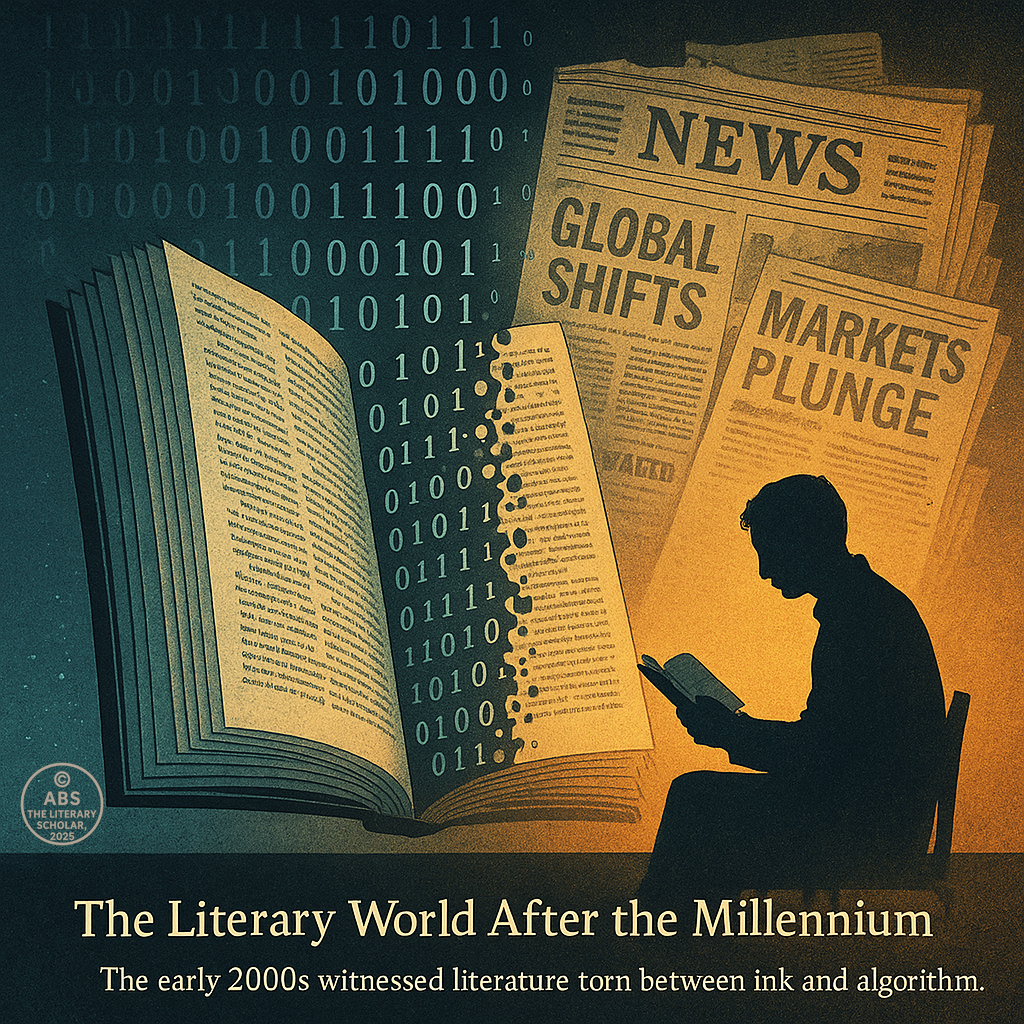
The Literature of Aftermath — Narrating the Post-9/11 World
“And then the towers fell, and fiction blinked.”
History has long influenced literature, but few single days have fractured narrative imagination like September 11, 2001. The terrorist attacks on the World Trade Center and the Pentagon did not merely shake geopolitical stability—they ruptured the collective psyche of an entire generation of writers and readers. It marked a new kind of fear: not of nations at war, but of the invisible, the ideological, the untraceable. Literature responded, not immediately with clarity, but with shattered timelines, unreliable narrators, dislocated identities, and an urgent, trembling search for meaning.
What does it mean to tell a story after an event that seems untellable?
This became the defining question of post-9/11 fiction—not how to narrate the event, but how to narrate in its long, shapeless shadow.
Contemporary Literature 2000–2012 : Falling Men and Fragmented Narratives
One of the earliest literary witnesses to this aftermath was Don DeLillo, whose novel Falling Man (2007) doesn’t retell the event but rather circles its residue—the trauma, the silence, the psychological drift of its survivors. A man escapes the towers and walks home bleeding; a performance artist replicates falling bodies across the city. The prose itself mimics shell-shock—halting, disjointed, terrified of its own clarity.
“It was not a street anymore but a world, a time and space of falling ash and near night.”
—Falling Man
DeLillo’s vision is less about the spectacle and more about language failing to rise where buildings have fallen. Memory becomes suspicious, perception haunted.
🔹 Children, Grief, and the Search for Meaning
Jonathan Safran Foer’s Extremely Loud & Incredibly Close (2005) explores 9/11 through the lens of a precocious child, Oskar Schell, whose father died in the towers. The novel is an experiment in grief—employing photographs, blank pages, typographic play, and a hyper-verbal child protagonist who is looking for a lock to match a key left behind by his father. It isn’t just about loss—it is about language trying to rebuild a world too fragmented to reassemble.
The novel was accused of being sentimental, manipulative, even gimmicky. But it dared to dramatize the raw question of how trauma rewires narration, how memory may refuse linearity, and how children’s literature may carry the weight of adult catastrophe.
🔹 The Outsider’s Gaze: Rethinking Terror and Identity
In the aftermath of 9/11, the narrative didn’t just belong to America. It became global, contentious, and political.
Enter Mohsin Hamid’s The Reluctant Fundamentalist (2007), a taut monologue delivered by a Pakistani man to an unnamed American in a Lahore café. What appears as a polite conversation slowly curdles into tension, ambiguity, and accusation. The novel refuses clear answers. Was the narrator radicalized? Was he misunderstood? Is the listener a spy, or a victim, or both?
Hamid uses second-person narrative to implicate the reader. The novel is structurally simple but ideologically explosive, peeling apart binaries of West and East, victim and aggressor, fundamentalist and capitalist.
🔹 The Servant Who Refused to Serve: Class, Caste, and Post-Terror Capitalism
While the Western canon wrestled with terrorism, alienation, and surveillance, Indian literature approached the millennium from a different trauma—the grotesque inequalities of a booming economy.
Aravind Adiga’s The White Tiger (2008) tears through the myth of India Shining with brutal, unapologetic satire. Told through letters written by a servant-turned-murderer-turned-entrepreneur to the Chinese Premier, the novel is both a confession and a manifesto.
“India is two countries in one: an India of Light, and an India of Darkness.”
The novel captures the moral chaos of neoliberal India, where a man must either serve forever or kill to escape. And Adiga doesn’t make the reader comfortable. There is no redemption, no moral center—only ambition rising like steam off blood.
Here, 9/11 exists only as a distant headline. What matters is what it distracts from: the invisible wars of caste, corruption, and class. The White Tiger is not a reaction to terrorism but to the global hypocrisy that labels some violence as “savagery” and others as “success.”
🔹 Literary Patterns in the Post-9/11 World
Across geographies, several common traits emerged in post-9/11 fiction:
Unreliable narration: Reflecting a world where media, memory, and truth itself became suspect.
Minimalism or maximalism: Some novels turned sparse and wounded; others, experimental and loud—form became a reflection of psychological dissonance.
Global protagonists: Characters were no longer neatly national; they were immigrants, diasporas, stateless, hybrid.
Ethical ambiguity: Villains and victims blurred. Justice and revenge became indistinct twins.
🔹 Thematic Closure for the Section
The novel, in the first years of the new millennium, was no longer a shelter—it was a site of exposure.
Literature post-2001 became a mirror that couldn’t help but crack. Its heroes were often survivors. Its villains were often inside the house. Its plots didn’t end—they frayed.
If modernism was born in the trenches of World War I, then contemporary literature was born from the burning towers, the leaking wires of surveillance, and the shrinking distance between reader and world.
In this new world, the question was not What happened? but Who gets to tell it—and how many tabs are open while they do?
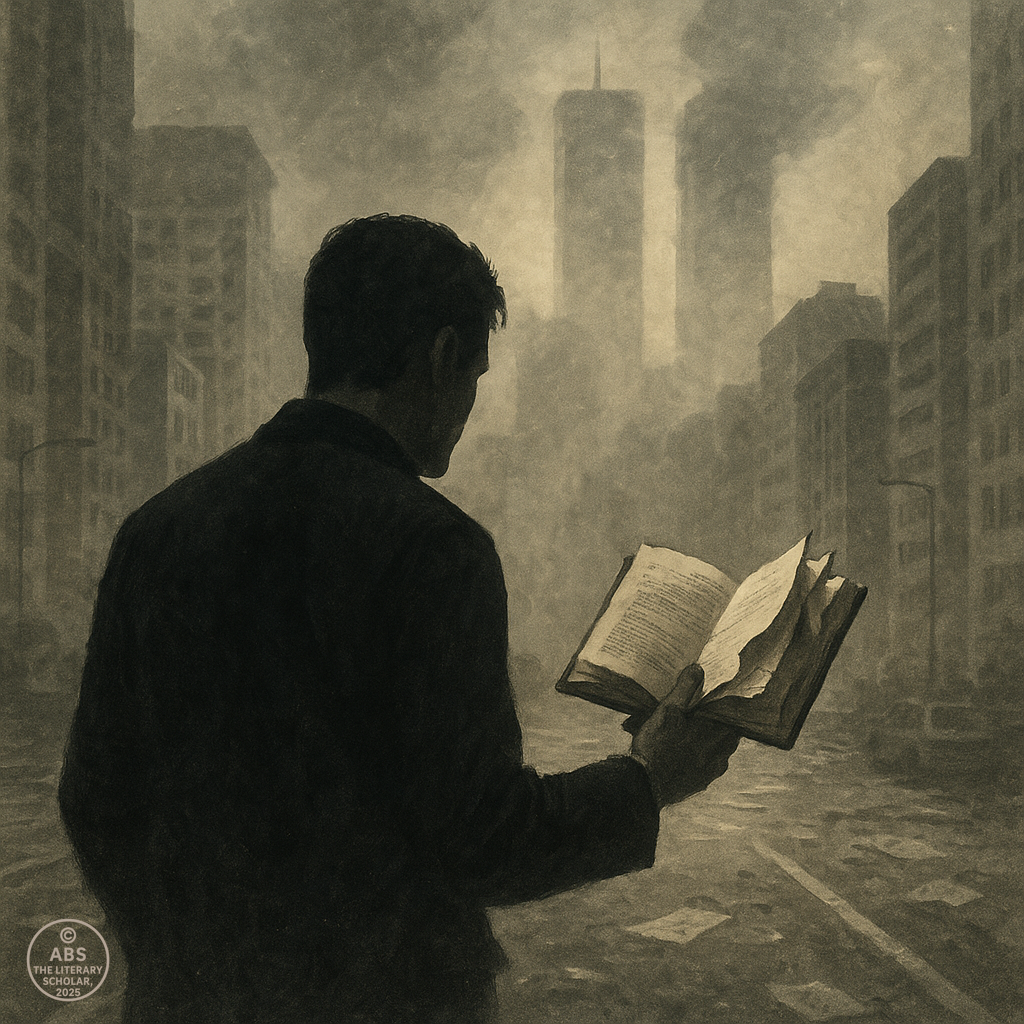
In Contemporary Literature 2000–2012 :
The Rise of the Global Novel — When English Became Everyone’s Language
“The empire may have shrunk, but the language multiplied.”
In the literary landscape of the early 21st century, English became less a mark of imperial inheritance and more a vessel of reclamation. Writers across continents were no longer borrowing the language—they were bending it, breaking it, and breathing new life into it. This was the era in which the novel, long assumed to be a Western artifact, emerged fully as a global instrument of narrative power, speaking of histories ignored, cultures misread, and identities long excluded from the traditional literary map.
Between 2000 and 2012, a wave of novels arrived from the so-called margins, but they did not whisper—they roared. These works were not apologetic, not deferential, and certainly not “exotic.” They were grounded in their own landscapes, unapologetically local in flavour, and yet they struck chords across global readerships. The result was the birth of a truly global novel—one that retained the specificity of its soil, but carried the voltage of universality.
Chimamanda Ngozi Adichie rose not as a “new voice” but as a long-silenced one, finally audible in the global chorus. Her novel Half of a Yellow Sun (2006) does not ask for permission to be heard—it demands it. Set during the Biafran War, the novel reclaims a violently erased moment in Nigerian history, not through the abstractions of geopolitics, but through the aching intimacy of human connection. The character tapestry is rich: Ugwu, the houseboy who becomes a reluctant soldier; Olanna, the educated woman torn between privilege and purpose; and Richard, the white Englishman attempting to understand a war that is not his but within which he is hopelessly entangled.
Adichie writes with surgical empathy and fearless clarity. She does not explain Africa to the West—she writes Africa to itself. Her English is not colonial—it is defiant, vivid, and uncolonizable.
“There are some things that are so unforgivable that they make other things easily forgivable.”
In Adichie’s hands, the novel becomes a site of memory and mourning, but also of resistance. This is not diasporic literature searching for belonging. This is anchored literature reminding the world that it exists, and has always existed—even when the canon closed its eyes.
Khaled Hosseini’s The Kite Runner (2003) followed a different path to global acclaim. While Adichie sharpened history into literary blade, Hosseini opted for the epic of feeling. His novel is drenched in longing, shame, and the complicated bond between two boys—Amir, privileged and broken; Hassan, loyal and brutalized—in 1970s Afghanistan. But as the timeline stretches across coups, Taliban terror, and diasporic exile in the U.S., the novel becomes a portrait of a country, a people, and a conscience in collapse.
There is a tenderness in Hosseini’s prose that disarms the reader before confronting them with horror. His global impact came not through stylistic experimentation but through emotional truth. He humanized the headlines. He gave grief a face. His language, often sentimental, became a salve in a time of alienation.
“For you, a thousand times over.”
In the post-9/11 West, The Kite Runner was more than a bestseller. It became a soft counter-narrative to the Islamophobic fear-machine—a reminder that every bombed land has lullabies, memories, and moral dilemmas just as real as any suburban novel.
Aravind Adiga, whose The White Tiger (2008) took home the Booker Prize, threw sentimentality out the window. His novel, framed as a series of brutally sarcastic letters from a servant-turned-murderer to the Premier of China, is a howl against the hypocrisy of global capitalism. Where Hosseini wants you to weep, Adiga wants you to wince.
Balram Halwai, the anti-hero of the narrative, is not seeking redemption—he’s seeking revenge through reinvention. His India is not mystical or moral—it is rotting, corrupt, and driven by the fever of wealth. The story does not unfold—it pounces, sneers, and spits at every polite euphemism used to describe modern India’s rise.
“The trustworthiness of servants is the basis of the entire Indian economy.”
What made Adiga’s novel global was not its location—but its language of rage, its critique of the neoliberal myth, and its ability to pierce through polite international applause. This was not a novel that sought a seat at the literary table. It kicked the table over.
By 2012, the English novel had ceased to be monolingual in its spirit. It now bore accents, dialects, slangs, songs, and silences from places long ignored. Writers like Jhumpa Lahiri, Aleksandar Hemon, Junot Díaz, and Yiyun Li complicated the very idea of belonging. Their fiction did not resolve the immigrant experience—it destabilized it.
The global novel was no longer about borders. It was about hybridity, fracture, and multiple homes. The protagonists were no longer innocent outsiders—they were code-switchers, cultural translators, and shape-shifters, all trying to survive a world that kept changing shape.
The canon did not break—it expanded. Or rather, it was infiltrated.
The gatekeepers could not keep out voices that no longer sought entry, but came through other doors, on other terms, in other tongues—through novels, translations, spoken word, and digital ink. And as they entered, literature itself changed its texture, its temperature, and its threshold of truth.
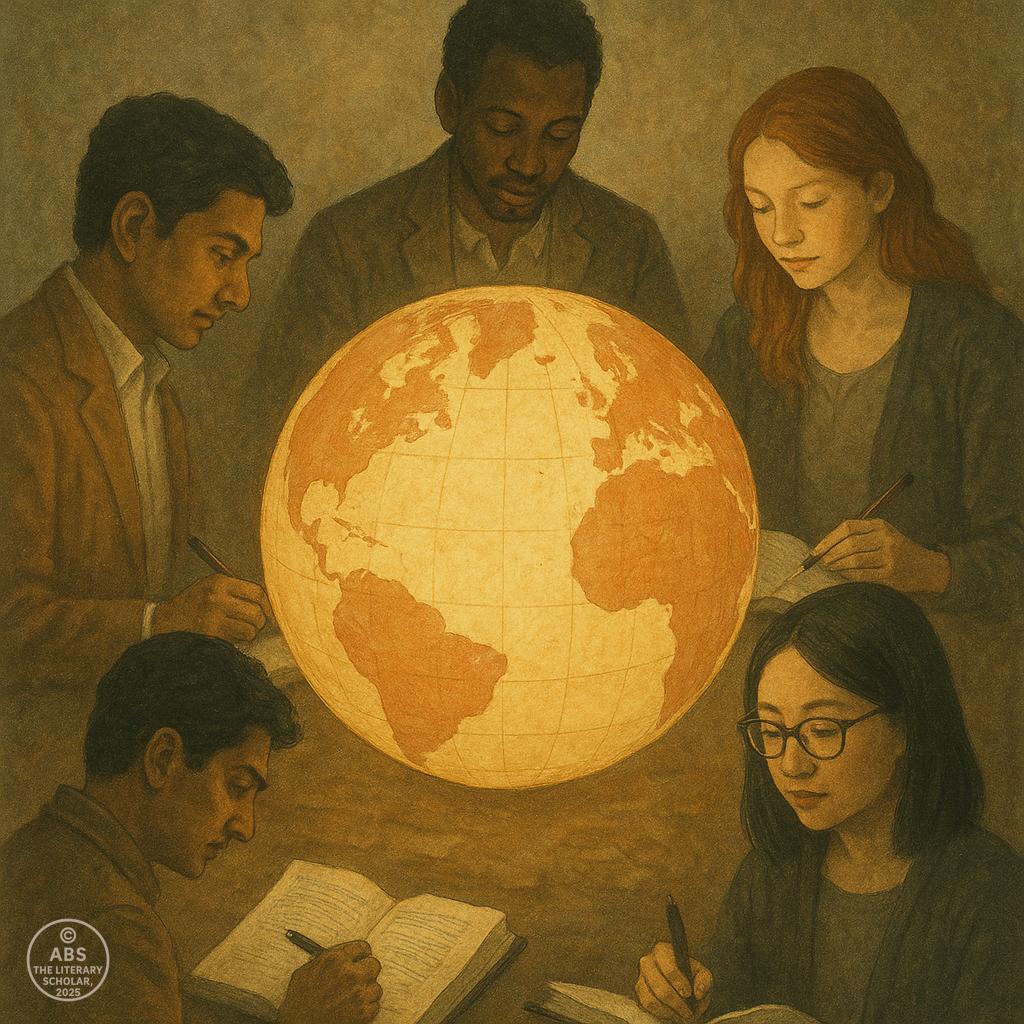
Autofiction and the Blurring of Genre — When the Self Became the Plot
“Fact sat down in Fiction’s armchair—and refused to leave.”
In the early years of the 21st century, a curious literary shift occurred: plot stepped aside, and the self took center stage. The boundaries between memoir and novel, confession and creation, fact and fabrication grew hazy, and in that shimmering in-betweenness emerged one of the era’s most influential forms: autofiction.
Autofiction is not autobiography. Nor is it fiction wearing a nametag. It is something more elusive—a narrative that uses the author’s life as clay but molds it with the hands of imagination. The narrator may bear the writer’s name. The events may echo real headlines or private wounds. But what matters most is not the accuracy of the facts—but the authenticity of the feeling.
This was not a form invented in the 2000s—writers like Proust, Coetzee, and Philip Roth had already flirted with it—but post-2000 autofiction arrived with urgency, boldness, and, often, bruised honesty, reflecting a culture obsessed with identity, exposure, and the blurry line between public and private.
Karl Ove Knausgård, the Norwegian literary phenomenon, took autofiction to its extreme edge with My Struggle (Min Kamp, 2009 onwards), a six-volume autobiographical epic so exhaustively detailed that it seemed less like a novel and more like a life in raw data. Knausgård chronicled everything—from his father’s death to his daughter’s snack time—with painstaking intensity. Nothing was too banal, too intimate, or too shameful to be included.
“I was no longer a human being. I was a writer.”
What made My Struggle so unsettling was not just its candour—but its willingness to offend, expose, and obsess. Family members were outraged. Critics were divided. Yet readers devoured it. Why? Because in an era of curated identities and filtered realities, Knausgård offered something rare: narrative vulnerability without apology.
Rachel Cusk, in her acclaimed Outline trilogy (beginning in 2014 but rooted in earlier shifts), stripped the novel of traditional plot and let conversations become character. Her narrator is not a character in the conventional sense—she is a listening silhouette, allowing the voices of others to shape the narrative. Cusk’s innovation was stylistic and philosophical: she questioned whether storytelling itself could remain intact in a fractured world.
Though Outline appeared just after 2012, it belongs conceptually to this moment: a quiet rebellion against the inflated architecture of 20th-century fiction, in favor of something fragmented, meditative, and essayistic.
J.M. Coetzee, the South African Nobel laureate, offered an earlier and quieter autofictional model with his Scenes from Provincial Life trilogy—Boyhood, Youth, and Summertime (2009). These books, though clearly about Coetzee, maintain a cold, third-person detachment, turning the author into a character named “John.” In Summertime, the author is declared dead, and a series of interviews with his supposed acquaintances creates a posthumous portrait of fiction itself.
What is real in Coetzee? What is crafted? That’s precisely the point. In his literary world, truth is not revealed—it is revealed to be constructed.
At its core, autofiction reflects a crisis of narrative authority. In a world where everything is documented, googled, uploaded, and archived, what does it mean to “invent” anymore? Why not narrate the self, especially when the self is the only terrain the writer can truthfully claim?
But there is also a risk. Autofiction flirts with narcissism, insularity, and repetition. Not every memory is literature. Not every confession deserves binding. The genre demands a paradoxical discipline: to expose oneself without indulging oneself.
And yet, its rise is no accident. Autofiction resonates in an age of memoir booms, social media overexposure, and literary festivals where authors are asked not about characters—but about their traumas. The author has become the protagonist. And the reader? Half-curious voyeur, half-silent therapist.
Even outside the West, autofiction began to stir. In India, writers like Annie Zaidi, Jeet Thayil, and Aatish Taseer penned semi-autobiographical novels that blended memory and fiction, while across the Atlantic, Sheila Heti’s How Should a Person Be? (2010) blurred emails, real names, and staged dialogue into a messy but brilliant self-portrait of a woman asking questions that society had already answered for her.
“What is the point of writing if not to confess?”
—Sheila Heti
Autofiction became the literature of those unwilling to lie, but unable to tell the truth without style.
By 2012, the genre had become a quiet revolution. It did not explode like postmodernism or sweep like magical realism—it dripped into the literary bloodstream, until entire novels began to feel like intimate voice notes, typed in lowercase, shared in confidence.
If the 20th century gave us characters that defined eras—Holden Caulfield, Clarissa Dalloway, Bigger Thomas—the early 21st century gave us a new archetype: the narrator as author, and the author as experiment. The plot was now internal. The climax, emotional. The form, fluid.
And so literature, once again, folded inward—not to retreat, but to interrogate the seams of the self, stitch by stitch.
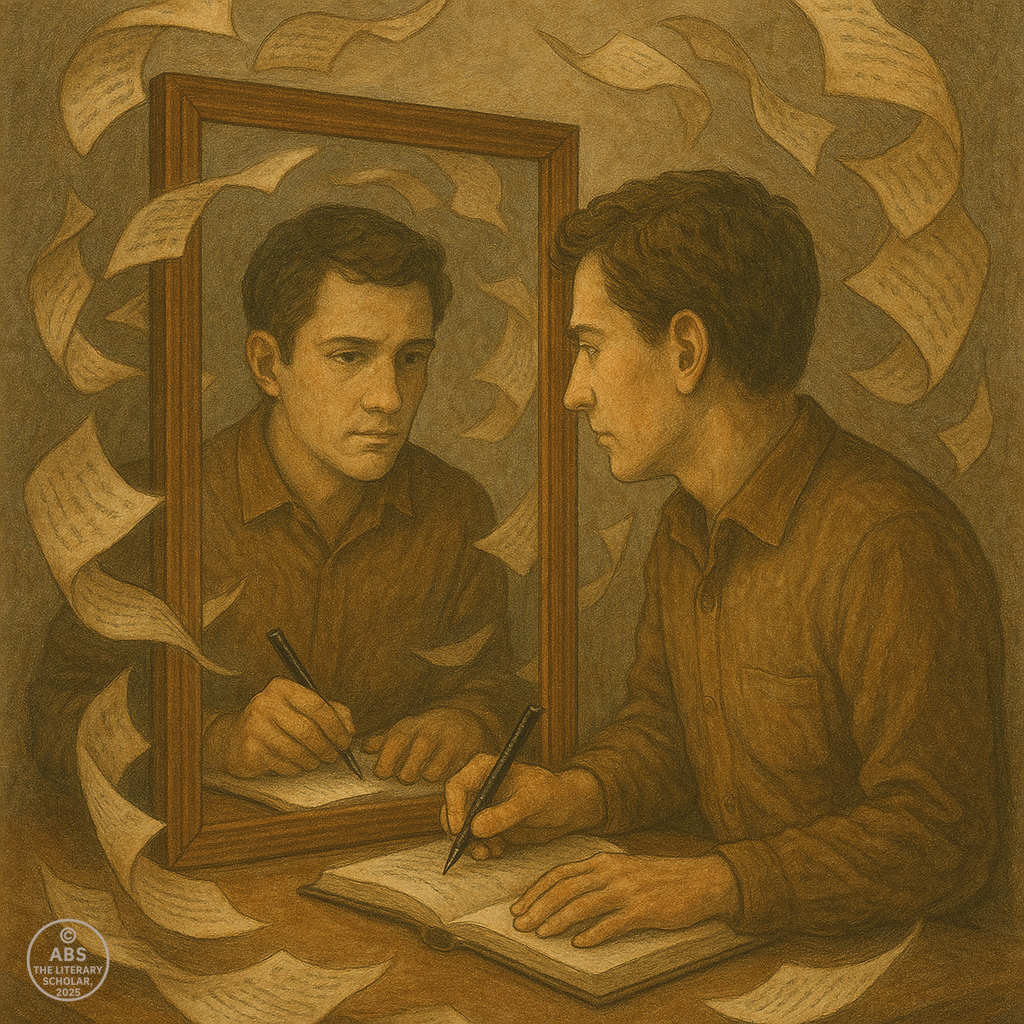
The Return of the Political — Literature as Protest, Power, and Provocation
“When the world burned, fiction stopped describing the fire—and started naming the arsonists.”
The early 21st century may have begun with metaphysical uncertainty, but it did not remain apolitical for long. As the decade unfolded, the world did not just witness terror—it saw inequality sharpen, democracies wobble, and capitalism begin to crack at its glossy seams. In response, literature shed its postmodern aloofness and re-entered the public square.
This was not the didactic moralizing of socialist realism, nor the righteous clarity of Orwellian dystopia. It was subtler, messier—a literature politically alive but aesthetically composed, where critique came through character, satire, structure, and silence.
Writers no longer whispered discontent through metaphor—they spoke it through markets, immigration queues, race riots, and rising tuition fees. The political novel was not revived—it was re-coded.
Colson Whitehead began this reclamation with Zone One (2011), a post-apocalyptic zombie novel that is, quite deliberately, about bureaucracy, trauma, race, and American myth. The protagonist is not a hero—he’s a cleaner, tasked with sweeping the city clean of undead “stragglers.” It is a quiet, cerebral, painfully bureaucratic apocalypse.
Beneath the blood and decay lies a sharp satire of capitalist reconstruction and the myth of American rebirth. The zombies are less frightening than the paperwork. And that is Whitehead’s point: even at the end of the world, the system survives.
“The world had become one big chute of meat, and we were all stuck in its teeth.”
Teju Cole’s Open City (2011) is political in the most disarming way. Its narrator, Julius, a Nigerian psychiatrist walking through New York, appears detached, urbane, intellectually fluid. But as he meanders—through conversations, histories, and silences—something dark begins to seep in. He remembers colonial violence. He notices racial codes. He avoids his own sins.
This is not a protest novel—it is a meditation on guilt, memory, and complicity, where politics does not arrive as drama but as shadow. Julius is not a symbol. He is a symptom of global modernity—erudite, displaced, ethically unresolved.
Aravind Adiga, in The White Tiger (2008), resurfaces here not merely as a postcolonial satirist but as a fierce literary political commentator. His anti-hero Balram Halwai becomes the very embodiment of India’s class rage and caste rot, narrating his ascent from darkness to light through murder, cunning, and capitalist mimicry.
What makes Adiga’s work politically electric is its refusal to moralize. There are no victims—only survivors. There is no justice—only freedom bought through blood. The structure of the novel itself—a letter to the Chinese Premier—mocks the performative pageantry of global summits, as if the developing world must constantly explain itself to its richer cousins.
“There’s only one way to break free—by smashing the chicken coop.”
Adiga’s coop is caste. His chicken is the servant class. And his novel is the axe.
Meanwhile, Kamila Shamsie’s Burnt Shadows (2009) created a transcontinental epic of political consequences. Beginning with Nagasaki in 1945 and ending in post-9/11 Afghanistan, the novel follows Hiroko Tanaka, a Japanese woman whose fate is entangled with empire, migration, partition, Cold War espionage, and the war on terror.
Shamsie collapses history into narrative, showing how no political event is ever isolated—how borders do not contain trauma. Her language is lyrical, but the message is searing: violence is not exceptional—it is historical, patterned, and portable.
Mohsin Hamid, in The Reluctant Fundamentalist (2007), returned with his masterstroke of second-person narration, where a Pakistani man delivers a long monologue to an American in Lahore. The novel dances on the edge of ambiguity—are we hearing a radicalization? A critique of America? A personal confession? A veiled threat?
Hamid does not resolve the tension. Instead, he transforms it into an ethical discomfort. He puts the reader in the position of the American stranger—and refuses to let them leave unimplicated.
“We are all just one act away from being called something else.”
Hamid’s political power lies in his refusal to preach. His novel does not teach—it confronts.
Elsewhere, Hari Kunzru’s My Revolutions (2007) probed into the revolutionary dreams of the 1960s and the slow decay of idealism. Its protagonist, a former radical now hiding in middle-class anonymity, is pulled back into his past. What begins as personal reckoning becomes a reflection on how radicalism ages—and what happens when revolt goes cold.
Dystopia also became political literature’s playground, as seen in Margaret Atwood’s Oryx and Crake (2003)—a chilling biotech-fueled vision of a world ravaged by greed, genetics, and ecological collapse. Atwood famously called her work not “science fiction” but “speculative fiction”—because every horror she imagined already existed in some lab, some policy, some boardroom.
By the end of 2012, it was clear: literature had re-entered the bloodstream of real-world injustice. These novels did not simplify politics—they interrogated its language, exposed its rituals, and eviscerated its hypocrisies.
The political novel was no longer about ideology. It was about survival, shame, complicity, and the slow violence of systems that outlive their slogans.
Gone was the neutral narrator, the universal protagonist, the detached observer. What replaced them were stories rooted in race, class, gender, history, war, empire, displacement, and the tragic comedy of democracy.
Fiction had remembered its ancient purpose—not just to entertain or escape, but to disturb the comfortable and comfort the disturbed.
And the reader, no longer exempt, found themselves not holding a book—but holding evidence.
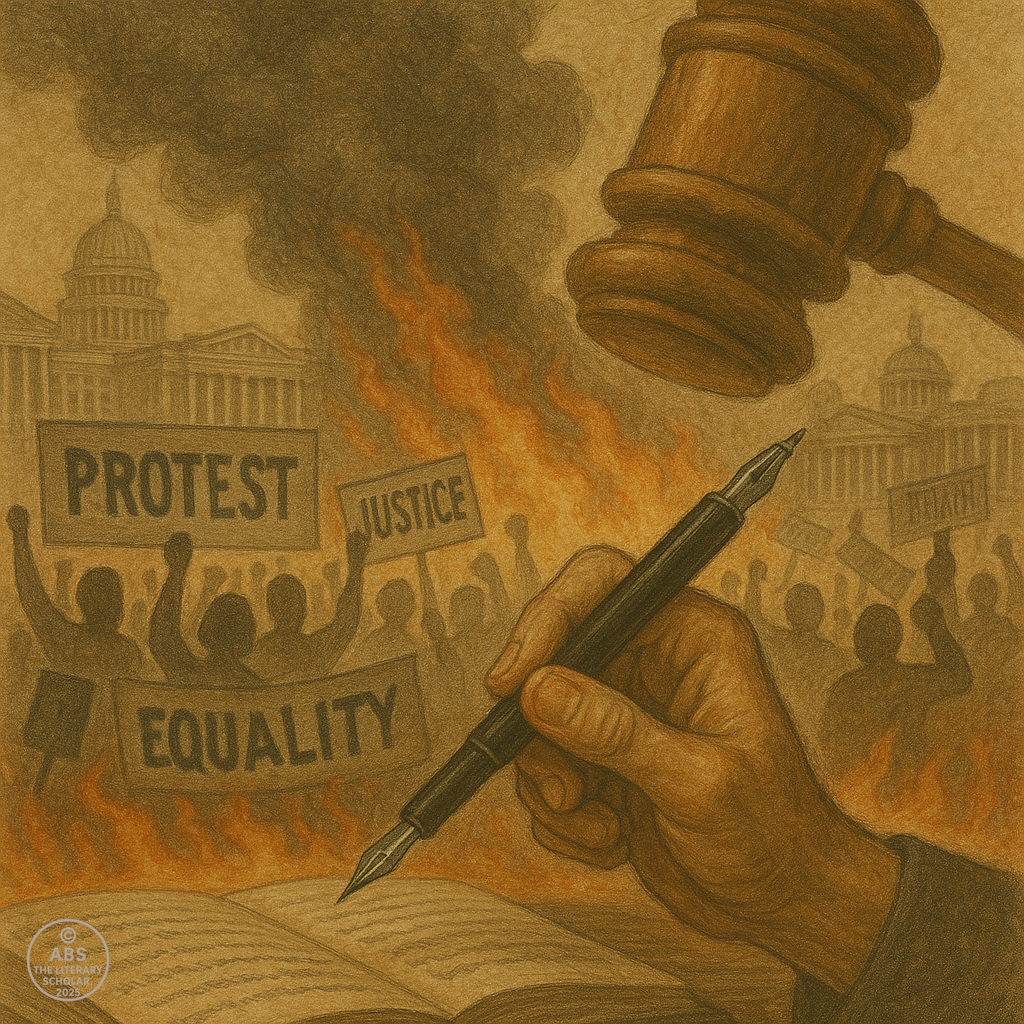
Genre Fiction Breaks the Canon — When the Improbable Became Inevitable
“Once upon a time, genre fiction lived downstairs. By 2012, it had kicked open the library door—and started rewriting the rules.”
For decades, genre fiction was the guilty pleasure of the serious reader, the paperback with dragons, detectives, or dystopias that one devoured in secret and never cited in a thesis. High literature wore the perfume of ambiguity and realism; genre fiction, the musk of plot, pace, and occasionally, zombies. But in the first decade of the 21st century, this hierarchy began to collapse. The walls between “literary” and “genre” eroded—not because genre fiction changed, but because reality itself began to resemble science fiction, horror, and satire.
This was the age when the improbable became prophetic. When fantasy exposed imperialism better than realism. When dystopia looked like the morning news. And when post-apocalyptic narratives felt more accurate than diplomatic reports.
Speculative fiction was no longer a playground—it was a battleground.
No one embodied this evolution more sharply than Margaret Atwood, whose Oryx and Crake (2003) was not merely a return to speculative terrain—it was an act of literary defiance. In her genetically altered near-future world, mega-corporations, designer diseases, and climate disasters are not imaginative leaps but logical conclusions of present greed.
Atwood refused to call her novel “science fiction.” She preferred “speculative fiction,” arguing that everything in her imagined world had already occurred—in a lab, a boardroom, or a quietly tabled policy document.
“I’m not interested in the future. I’m interested in the logical outcome of what we’re doing now.”
Her dystopia was not metaphor—it was a mirror, slightly fogged but still brutally recognizable. And suddenly, readers who’d once sniffed at genre found themselves knee-deep in it.
Meanwhile, Neil Gaiman blurred the boundary between myth and the modern. With novels like American Gods (2001), he resurrected the archetypes of folklore and set them loose on highways, convenience stores, and television sets. Gods of war, love, technology, and death all jostle for relevance in a consumerist America where belief has become branding.
Gaiman’s genius lay not only in his mythic range but in his literary polish. He proved that genre could be philosophical, poetic, and subversive, all while still being compulsively readable.
Cormac McCarthy’s The Road (2006) pushed the literary establishment into the post-apocalyptic wasteland—and made it weep. Sparse, brutal, and stripped of punctuation, the novel followed a father and son wandering through the ashes of civilization. The tropes were all genre: apocalypse, cannibalism, ruined cities. But the treatment was so elemental, so elegiac, that it was shelved alongside Beckett and Dante.
“There is no God and we are his prophets.”
With one sentence, McCarthy gave the post-apocalypse a literary spine. He didn’t borrow from genre—he redefined it.
Even crime fiction shed its trench coat and joined the literary banquet. Stieg Larsson’s The Girl with the Dragon Tattoo (2005) became a global phenomenon not just for its mystery but for its damning portrait of misogyny, corruption, and Nordic hypocrisy. And while purists scoffed at its commercial tone, the novel’s cultural impact was undeniable—it marked the arrival of socially conscious crime fiction, where entertainment wore the gloves of investigation, but carried the fingerprints of ideology.
Similarly, Tana French’s Dublin Murder Squad series reintroduced psychological depth and poetic language to detective fiction, while Gillian Flynn’s Sharp Objects (2006) and Dark Places (2009) carved out a new niche: feminist noir—bleak, intimate, and dripping with unspoken rage.
Fantasy, long exiled to the margins of literary respectability, staged a triumphant return.
With the global surge of Harry Potter, and the cinematic resurrection of The Lord of the Rings, fantasy was no longer a cult—it was a cultural tectonic plate. But more significantly, authors like China Miéville began constructing what he called “weird fiction”—a genre that fused fantasy, horror, politics, and post-Marxist theory into nightmarishly intelligent worlds. His Perdido Street Station (2000) is not escapism—it is a steampunk indictment of authoritarianism and industrial cruelty.
Fantasy, in this new form, did not avoid politics—it weaponized it.
So what changed? Why did genre fiction, once cordoned off as “commercial,” become the vessel for the most urgent, relevant, and literary explorations of our time?
Because the world itself stopped resembling realism.
What novel of manners can capture the horror of genocide? What drawing-room dialogue can explain ecological collapse? As the stakes of the century escalated—from mass surveillance to pandemics to algorithmic oppression—realism began to look quaint. And so literature reached again for the fabulous, the speculative, the thrilling—not to escape, but to confront.
By 2012, genre fiction had not only entered the canon—it had rewired it. The idea that “serious fiction” must remain bound to psychological realism was now laughably outdated. Instead, the best literature stole openly from science fiction, fantasy, horror, and crime—not as compromise, but as evolution.
What was once pulp became prophecy.
And perhaps, the deepest irony of all: literary fiction survived the century’s rupture by becoming less literary—and more imaginative.
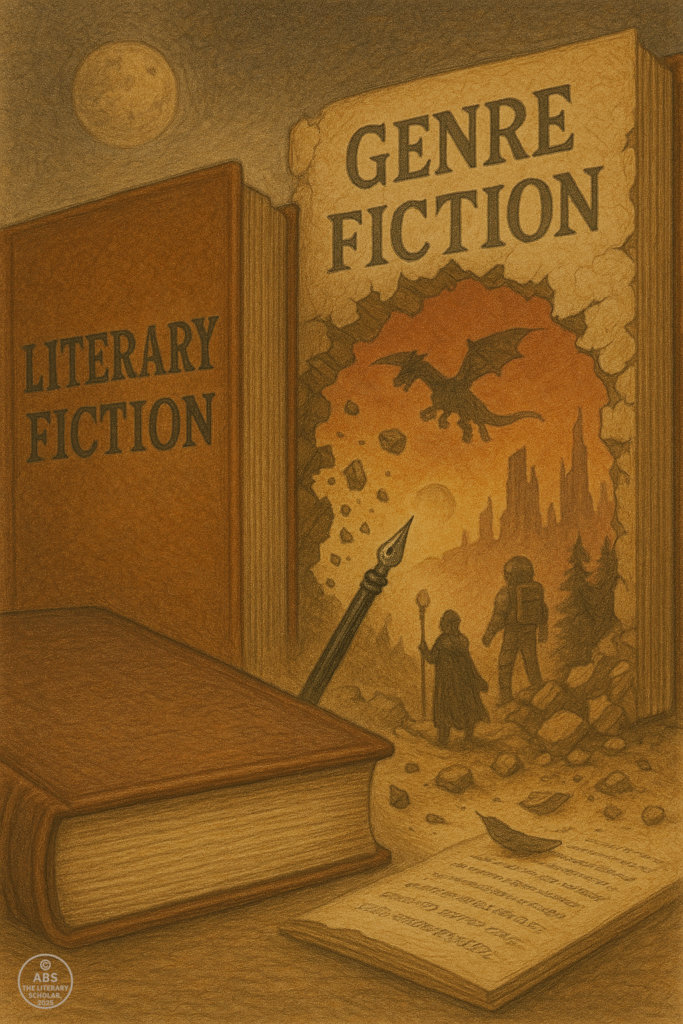
Digital Storytelling and New Forms — When the Page Became a Portal
“The novel looked up from its page—and saw a screen staring back.”
By the early 2000s, literature found itself in unfamiliar terrain—not just thematically, but physically. The rise of digital technology did not merely give literature a new medium—it gave it a new nervous system. Hypertext, blogs, digital journals, e-readers, and online platforms reshaped how writing was produced, distributed, and consumed. Storytelling became nonlinear, participatory, and clickable. A new kind of reader was born: one who skimmed, searched, swiped, and sometimes even co-created.
Print was no longer the sole vessel of narrative legitimacy. Literature had moved into the cloud—and it wasn’t coming back down.
Blogs became confessions, manifestos, and novels-in-fragments. Writers like David Eggers, whose A Heartbreaking Work of Staggering Genius (2000) blurred memoir and meta-fiction, ushered in an age where the voice of the author was informal, ironic, and visibly online. The book felt like a long-form blog in spirit—messy, vulnerable, and self-aware. The narrator not only told the story but questioned its construction in real time, like a blogger pausing mid-post to ask if anyone was still reading.
This performative self-awareness was not accidental—it was the digital consciousness infiltrating literary form.
Mark Z. Danielewski’s House of Leaves (2000) stood at the very edge of form, readability, and madness. A novel within a novel within an academic footnote within a hallucination, the book mimicked the structure of the internet before the internet had fully devoured the novel. Text runs sideways, vanishes, spirals, or nests inside margins. Readers turn pages sideways, flip between layers, question the narrator’s sanity, and lose their place—exactly as one does online.
The book is not about a haunted house—it is a haunted house. And like the internet, it asks: what is truth when every source is unreliable and every reference recursive?
“This is not for you.” — the chilling opening line, which reads like a browser warning and an existential sigh.
Hypertext fiction—though often relegated to experimental corners—also gained attention. Writers like Shelley Jackson (Patchwork Girl, 1995) had laid the groundwork, but the early 2000s witnessed new life for the form. These were stories that you clicked through, not read linearly. Each choice opened a new path; each path fractured the notion of a singular narrative.
This was not storytelling as arc—but storytelling as architecture. The reader became a wanderer, an explorer in a literary maze, not turning pages but opening doors.
Fanfiction, once dismissed as amateur mimicry, quietly democratized narrative ownership. The explosion of sites like FanFiction.net and later Archive of Our Own turned readers into writers and reshaped authorship as community performance. Characters no longer belonged to creators—they became cultural currency passed between users, genders, and politics.
Suddenly, queer subtexts became main plots. Marginal characters found center stage. Traditional narrative rules were overruled by a thousand collective rewritings. It was chaotic, emotional, and deeply political. And it forced traditional literary institutions to recognize a fundamental shift:
Readers were no longer just reading—they were rewriting.
Twitter, too, became a literary form—albeit accidental. The constraints of the platform—140 characters, then 280—created a new kind of poetic brevity. Writers began experimenting with serialized micro-narratives, poetic aphorisms, and thread-based storytelling. The form was fragile, fleeting, and profoundly immediate. A tweet could go viral or vanish. A novel excerpt could be pinned or buried.
What began as throwaway content became a stage for experiments in digital minimalism and ephemerality.
E-books and Kindles—which emerged more prominently post-2007—began shifting reader habits. Not only was the page now a screen, but it could adjust its font, backlight itself, bookmark without creasing, and disappear with a tap. Some saw this as the death of the physical book. Others recognized it as the birth of literature’s new skin.
Writers, particularly independent ones, began bypassing publishers entirely, releasing works digitally, updating them in real time, tracking reader analytics—a terrifying but exhilarating transformation where the novel met the algorithm.
The digital era did not destroy literature. But it did demand that literature reinvent its very contract with the reader.
Where once a novel was a closed object—printed, bounded, finite—it now became a fluid experience: hyperlinked, annotated, user-influenced, and sometimes even collaborative. The traditional triangle of author → text → reader had mutated into a feedback loop of author ↔ text ↔ reader ↔ platform ↔ market.
And yet, through all this, the fundamental yearning remained: to tell a story that mattered. Whether on paper or screen, whether coded in JavaScript or scratched into a Moleskine, literature still sought to wrestle with meaning.
The only difference was this: the reader now arrived with a blinking cursor and a backspace key.
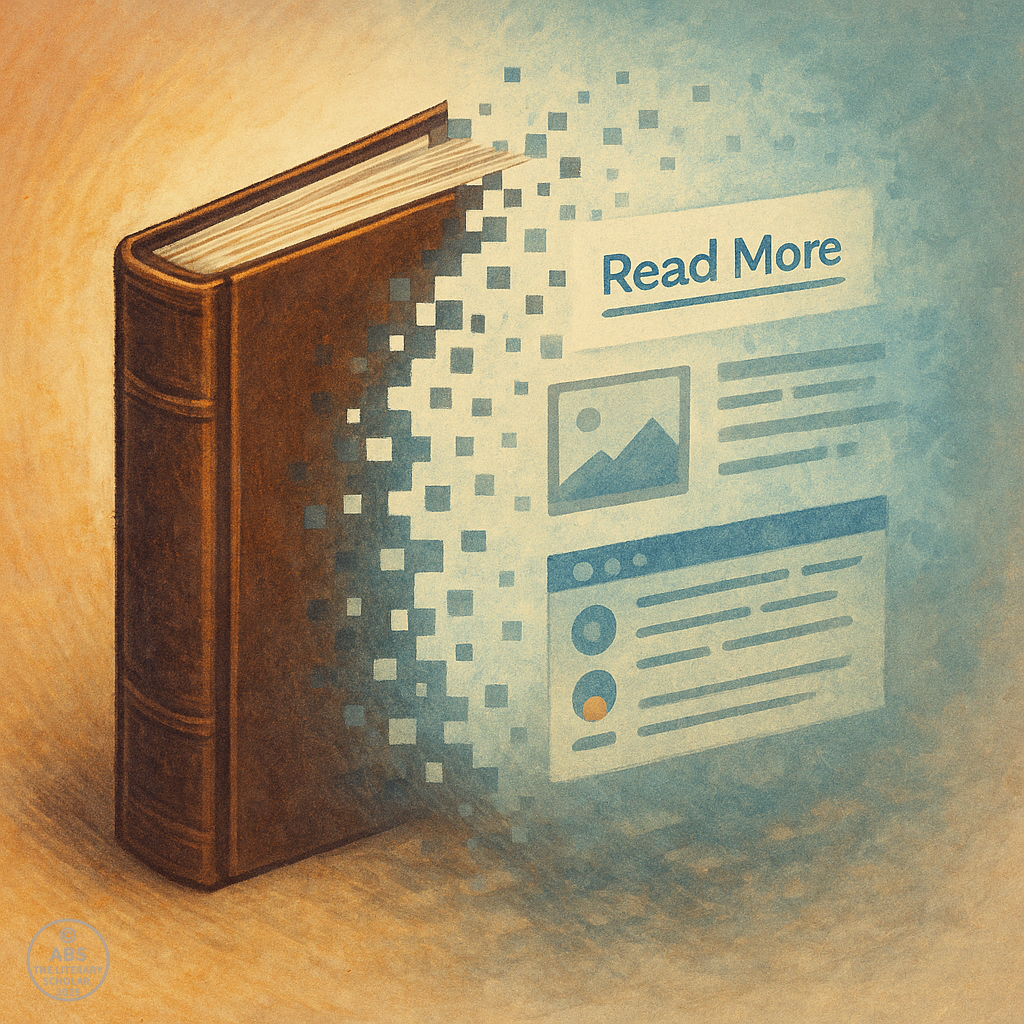
The Climate Crisis in Fiction — When the Planet Became Plot
“Once the setting, now the scream—Earth moved from backdrop to narrative.”
Throughout much of literary history, nature was aesthetic, symbolic, or scenic. The mountains echoed loneliness. The forest concealed temptation. The ocean mirrored the soul’s depth. But in the early 21st century, something irreversible happened: nature began to collapse—and take fiction with it.
Climate change, once a footnote in science reports, began to bleed into literature—not as metaphor, but as menace. Writers stopped painting sunsets and started measuring rising seas. The Anthropocene—our new geological epoch defined by human impact—gave birth to a new form of storytelling, where the disaster was not coming. It had already begun.
This was the decade where Cli-Fi emerged—not as fantasy or dystopia, but as a brutal realism with scientific footnotes and moral vertigo. The question was no longer “What if the Earth changes?”—it was “What if we did this, and what now?”
Ian McEwan’s Solar (2010) is perhaps the most ironic entry in the genre—a climate novel with a protagonist so odious, so narcissistic, so absurdly self-important, that one almost misses the planetary doom unfolding in the background. The novel follows Michael Beard, a physicist who wins the Nobel Prize and then coasts on ego, infidelity, and carbon hypocrisy, as he pretends to solve global warming for personal gain.
McEwan’s genius lies in satirizing the saviour complex of Western science, where innovation is often tangled in vanity and politics. The result is uncomfortable: the world is burning, and the people supposedly saving it are distracted by affairs, grants, and glass ego towers.
“The changing climate was a vast, featureless theme, lacking human agency, and littered with incomprehensible data.”
Exactly. And fiction, McEwan shows, is one of the few mediums that can re-humanize the scale of that data—through failure, farce, and fear.
Margaret Atwood, ever prescient, had already begun laying down her MaddAddam trilogy with Oryx and Crake (2003). While often discussed as dystopian or speculative, the novel is deeply grounded in environmental warning. In Atwood’s post-corporate apocalypse, the Earth is genetically mutilated, chemically sabotaged, and irreversibly wounded.
The corporations in her world are not villains in black cloaks—they are brands we already know, scaled up to grotesque ecological godhood. Genetic engineering creates glowing rabbits, meat tubes, and post-human species designed to outlast the self-destruction of humanity.
Atwood doesn’t merely warn us about climate change—she stitches it into biotech, food systems, and consumer psychology. Her narrative whispers: You’ve already bought the end. It came in recyclable packaging.
T.C. Boyle, with A Friend of the Earth (2000), delivered an early and savage meditation on environmental collapse and failed activism. Set in a 2025 ravaged by climate disasters, the novel flashes back to the 1980s and ’90s, when radical environmentalists tried and failed to change anything. The protagonist, Ty Tierwater, once a militant eco-activist, now manages exotic animals for a pop star—a symbol of how the revolution got domesticated.
The novel is both comedy and elegy, satirizing environmental movements while grieving their futility.
“You do what you can. You do what you must. Then you watch it all drown anyway.”
Boyle’s fiction mourns the futility of moral urgency in a system built on delay.
Jeanette Winterson’s The Stone Gods (2007) connects environmental degradation to corporate colonization, time travel, and love. It is speculative, yes—but beneath the loops of planets and lovers is a painful clarity: we don’t just destroy one Earth. We do it over and over again.
Her novel fuses science fiction with eco-feminism, arguing that the planetary apocalypse is not just technological—it’s also emotional and ethical. Humans do not merely consume the world—they consume each other, one ideology at a time.
“We are the time travellers, lost in our own maps.”
Beyond the obvious literary names, Cli-Fi also bled into YA literature, thrillers, and indie publishing. It became a genre of anticipation and indictment, where the villain was not a monster—but a graph. A statistic. A glacier melting in silence.
By 2012, a new thematic urgency had taken root in literary consciousness:
The environment was no longer landscape—it was actor.
The apocalypse was no longer sudden—it was slow, uneven, and data-driven.
And the question was no longer “What should we do?” but “Can fiction still matter?”
Cli-Fi is not a prophecy. It is evidence disguised as story.
It exists to warn, to mourn, and sometimes, to accuse. These narratives remind us that we are no longer telling stories about the Earth—we are telling stories from within its crisis.
And perhaps that is literature’s most urgent new role:
To imagine how we might live, grieve, or perish in the ruins we have authored.
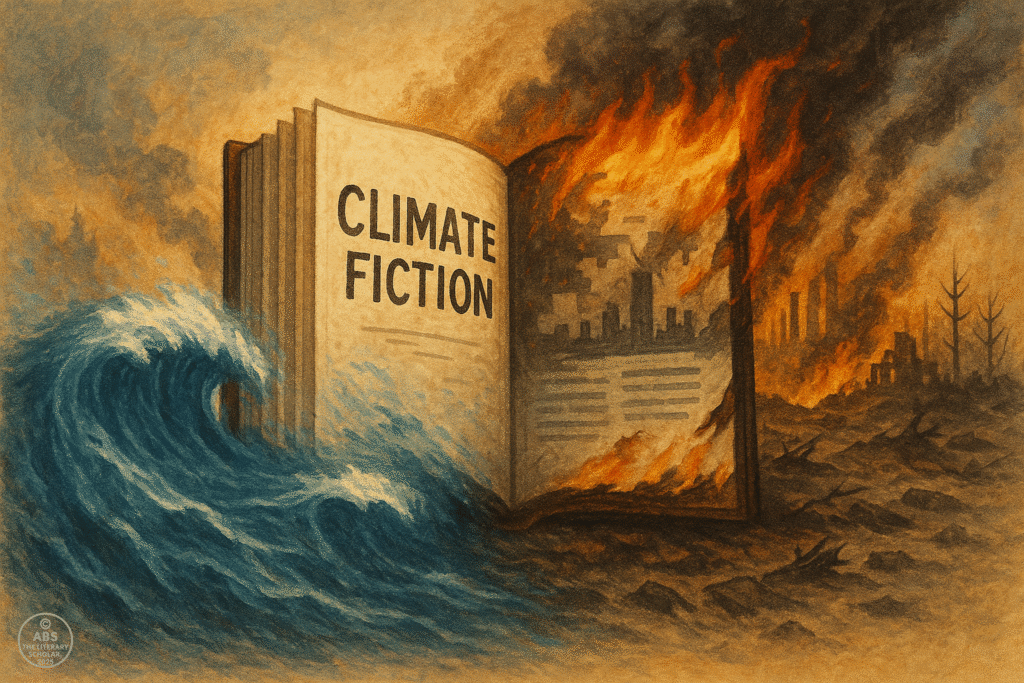
YA Fiction and Literary Crossovers — When Teenagers Took the Torch
“The children’s section caught fire—and no one had the heart to put it out.”
Once upon a very recent time, Young Adult fiction was condescended to—a holding pen for hormonal vampires, wizard schoolboys, and high school crushes, while the grown-ups read “real literature.” But the early 2000s saw an astonishing reversal. YA fiction became the site of our deepest existential anxieties—class conflict, government oppression, environmental disaster, identity formation, and the terrifying responsibilities of choice.
The teenage protagonist, once a bundle of awkward limbs and angst, became a revolutionary archetype—and the adult reader, jaded by irony and ennui, began to return to YA not to escape, but to remember what it meant to care again.
Suzanne Collins’s The Hunger Games (2008) did not just launch a trilogy—it launched an ideological franchise disguised as entertainment. At the centre stood Katniss Everdeen, a teenager from District 12 who volunteers for a televised death match to save her sister. But beneath the archery and romance subplot lies a scorched critique of media manipulation, class stratification, and state-sponsored violence.
“Panem et Circenses”—bread and circuses—became the sharpest indictment of a world where trauma is televised and rebellion is marketable.
Collins wrote a dystopia, but the mirrors it held up were shockingly contemporary: children sacrificed for spectacle, revolutions merchandised, grief televised. The Capitol was Hollywood in disguise; the Games, reality TV with body counts.
And the most subversive twist? The rebels didn’t win with bombs. They won with symbols. Literature hadn’t seen a heroine like Katniss since Antigone—armed not just with arrows, but silence, defiance, and unbearable grief.
Markus Zusak’s The Book Thief (2005) took the YA form and suffused it with lyrical fatalism. Set in Nazi Germany and narrated by Death, the novel follows a young girl, Liesel, who steals books to survive emotionally in a collapsing world. It is a book about books—about how words can shelter, save, or destroy.
“I am haunted by humans,” says Death at the end—and the line echoes like a closing bell for innocence.
Zusak’s novel proved that YA fiction could be poetic, devastating, and morally weighty without becoming didactic. It was written for young readers—but wept for the adult world.
Stephenie Meyer’s Twilight series (2005–2008), though critically derided, deserves a literary footnote not for its prose but for its impact. It rewrote the rules of fandom, genre visibility, and reader agency. Teen girls became a market force. Love triangles turned into publishing strategies. Fanfiction exploded into a global, participatory industry. (Fifty Shades of Grey was born in these very margins.)
What Meyer’s vampires lacked in subtlety, they gained in scale. And literary establishments, however reluctantly, had to admit: the blood being drawn wasn’t from throats—it was from the arteries of “serious literature.”
John Green, with novels like Looking for Alaska (2005) and The Fault in Our Stars (2012), brought philosophical weight to teenage tragedy, proving that young love, mortality, and meaning could be written with wit and structural sophistication.
Green’s teenagers don’t merely kiss and cry—they quote Whitman, fear oblivion, smoke symbolically, and leave footnotes in each other’s lives. They read like Holden Caulfield’s emotionally literate cousins.
“You don’t get to choose if you get hurt in this world… but you do have some say in who hurts you.”
His novels bridged the divide between emotional intensity and intellectual play, reshaping the idea that YA is simple. Simplicity, in his world, is deliberate elegance.
Thematic and formal evolution followed:
Genre-blending: YA fiction folded in dystopia, sci-fi, magical realism, and romance.
Moral clarity with nuance: Good and evil were rarely tidy; heroes made mistakes.
First-person narration: Created an immersive confessional urgency.
Seriality: The trilogy format became a narrative arc of revolution—book one: injustice, book two: awakening, book three: fire.
What made YA fiction so powerful in this era was not its simplicity—but its sincerity.
In an adult literary world fatigued by cynicism, self-reference, and postmodern detachment, YA dared to believe in sacrifice, justice, loyalty, and love that could change the world.
It treated young people not as unfinished adults—but as fully sentient beings confronting systems too broken for age to fix.
By 2012, YA fiction was no longer an age category.
It was a moral space, a crucible of contemporary fears and hopes, where:
Climate collapse could be stopped by a child.
Tyrants could be outwitted by teenagers.
And love, though temporary, could still be worth everything.
The crossover had occurred.
Adults were no longer reading YA for nostalgia.
They were reading it for truth.
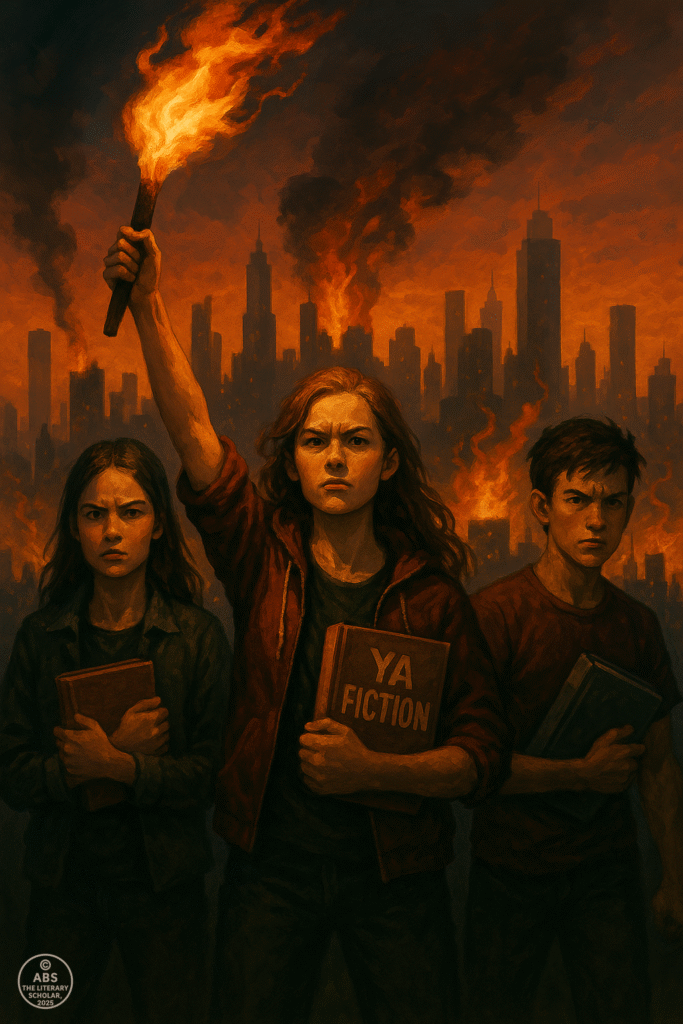
Feminism, Identity, and Body Writing — When the Page Became Flesh
“The body wrote back.”
As the twenty-first century began bleeding through its first decade, literature grew louder, rawer, and more anatomically urgent. For far too long, gendered writing—especially by women, queer writers, and non-white authors—was expected to remain tasteful, metaphorical, or palatable. But post-2000 fiction began to reject all that with surgical clarity. It tore the veil off politeness. It wrote the body as battlefield, archive, scar tissue, and manifesto.
This was no longer just feminism in theory. This was flesh feminism—narratives of blood, appetite, silence, menstruation, memory, sexuality, assault, and resistance. And these stories didn’t ask for space at the literary table. They brought their own chairs, knives, and inheritance.
Roxane Gay emerged in the latter part of the scroll’s period with her collection Ayiti (2011), which bridged short story, prose poetry, and microfiction. Haitian women—silenced by poverty, trauma, and diaspora—took centre stage. Gay’s style is stark, often compressed to a few paragraphs, but every word lands like bone against iron.
She does not describe pain—she distills it. Whether writing about rape, immigration, or silence, Gay constructs women who are neither heroic nor defeated. They are gritty, unfinished, and burning with interior monologues that the world refuses to hear.
Jeanette Winterson, already an established queer literary force, deepened her work with Weight (2005)—a retelling of the Atlas myth from a gendered, philosophical perspective. The body in her work is not merely physical—it is philosophical terrain, a weight-bearing structure carrying love, shame, desire, and memory.
“I want to feel what I feel. Even if it’s not happiness.”
Winterson’s feminism is mythic, poetic, and unapologetically cerebral. She doesn’t just reclaim old myths—she rewrites their architecture to make space for queer longing and female autonomy.
Chimamanda Ngozi Adichie, whose Half of a Yellow Sun was discussed earlier for its political scale, deserves another mention for her gender politics. In her work, feminism is never an academic term—it is lived, experienced, argued, internalized, and passed down. The female body, in Adichie’s fiction, becomes the site of ideology, trauma, resilience, and sometimes, quiet vengeance.
Olanna, the protagonist, does not merely live through war—she endures patriarchal erasure, sexual violence, and the expectation that women must carry not just children, but also the entire emotional scaffolding of the world.
Jhumpa Lahiri, in Unaccustomed Earth (2008), wrote feminism in whisper tones—through migration, daughterhood, duty, and quiet rebellion. Her stories are populated with women silenced not by violence, but by expectation. And yet their resistance—small, precise, internal—feels seismic.
Lahiri’s women do not yell, but they turn slightly—and that slight turn alters generational legacy. Her prose is delicate, her tone restrained, but her impact fierce. She reclaims silence as a literary tension, not absence.
Elsewhere, Toni Morrison’s A Mercy (2008) returned to early colonial America and centred enslaved women long before they were visible in national memory. Morrison does not write about the body as property—she writes it as a stolen hymn, echoing through time. Her prose remains Biblical in rhythm, but every line is laced with fire.
“Don’t ask me to explain. There is no defense.”
Morrison’s feminism is not universal—it is rooted, intersectional, deeply racialized. She shows that gender without race is erasure—and race without gender is injustice half-told.
This was also the decade when the memoir fused with feminist theory—and the literary essay became a confessional-critique hybrid. Slavoj Žižek no longer dominated the syllabus alone—he now sat next to bell hooks, Audre Lorde, and Judith Butler. Theorizing the body became a form of narrative. Storytelling became a scholarly resurrection of the self.
Across genres and forms, the female and queer body was no longer metaphor:
It bled on the page.
It dissented in orgasm.
It mourned in stretch marks.
It disappeared in trauma and reappeared in testimony.
From motherhood to menstruation, from anorexia to abortion, from rape to rebirth—the body was written not as ornament, but as evidence.
What unified this literature was not genre, style, or theme—but defiance.
It refused:
the male gaze,
the polite silence,
the literary prize that wanted form but not fury.
And in its place, it offered something far more enduring—truth with nerve endings.
By 2012, one thing was certain:
Feminism was no longer a side narrative. It was a structural force in the novel’s DNA.
It shaped characters, storylines, form, grammar—even marketing. It refused to be reduced to “strong women characters” or “feisty heroines.” Instead, it demanded complexity, contradiction, and chaos.
This was not literature about “female issues.” This was literature about human freedom—and the cost of its denial.
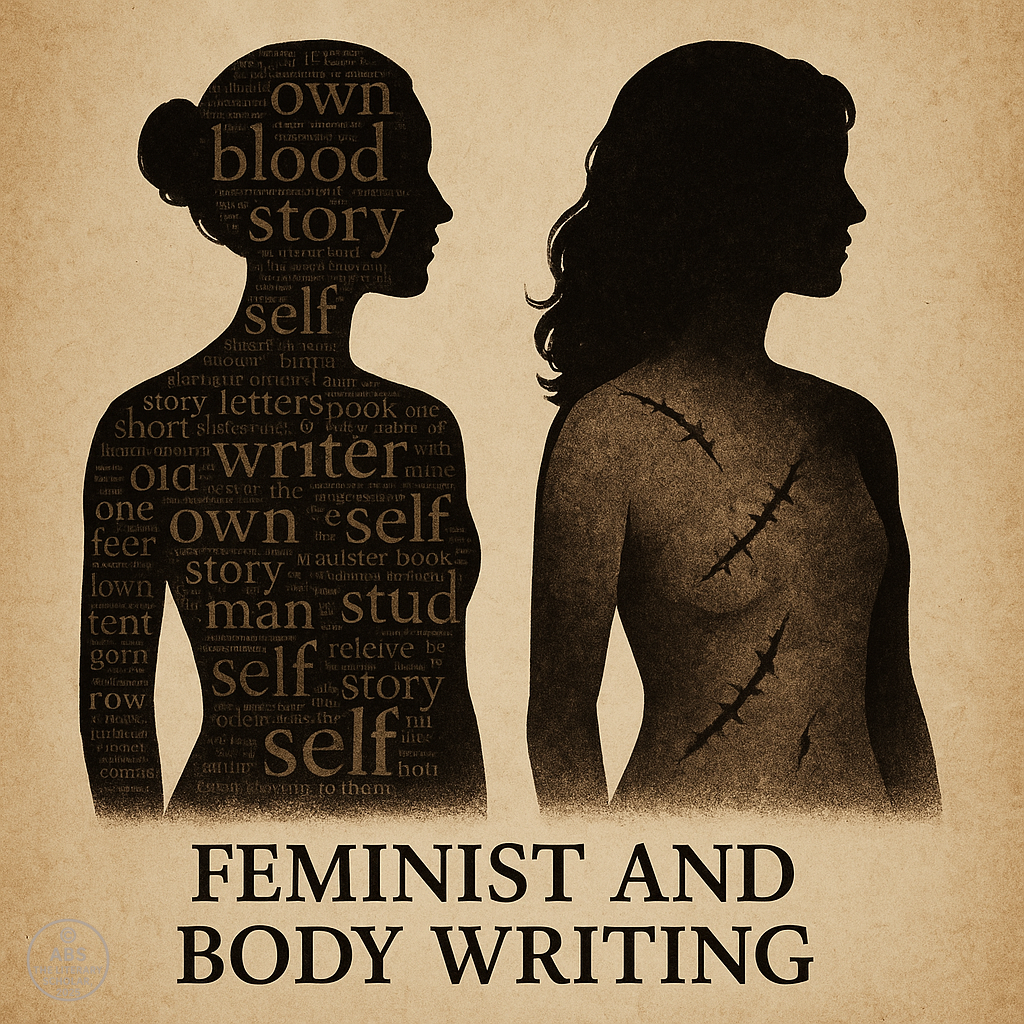
The Resurrected Short Story — When Brevity Cut Deeper Than Novels
“A page became a scalpel.”
Once viewed as literary warm-ups or magazine filler, short stories were too often dismissed as stepping stones to the “real” literary form—the novel. But as the new millennium unfolded, attention spans frayed, digital platforms compressed, and lives accelerated, the short story returned—not as minor form, but as precision instrument.
Between 2000 and 2012, a remarkable resurgence occurred. Writers wielded the short story like surgical steel—cutting fast, cutting deep, and leaving behind wounds that echoed longer than some novels. No longer a relic of Chekhovian subtlety, the short story of this era became restless, experimental, and surgically contemporary.
George Saunders led the charge like a literary mad scientist. His collection Tenth of December (published in 2013 but containing stories written well before) represented the culmination of a decade of short-form innovation. Saunders blends dystopia, satire, pathos, and psychological truth with staggering control. His characters are broken humans inside broken systems—employees in absurd theme parks, test subjects in moral experiments, children surviving failed utopias.
His style is unmistakable: vernacular-heavy, empathy-dripping, and structurally inventive. One story might resemble a self-help brochure. Another might spin in a character’s subconscious. But always, Saunders returns to one central question: how do we stay human in inhuman systems?
“A guy can’t live in a goddamn dream house forever.” — Tenth of December
And yet, Saunders showed us that even dream houses can house nightmares—and kindness can survive inside carnage.
Jhumpa Lahiri, already Booker-winning with Interpreter of Maladies (1999), deepened her craft in the 2000s with Unaccustomed Earth (2008)—a collection of diasporic stories that ache with unspoken tensions. Her stories are longer, quieter, and devastatingly precise. Indian-American families navigate identity, grief, silence, and memory in new geographies.
Lahiri writes emotional devastation with a surgeon’s restraint. She never overwrites. Her power lies in what’s not said. She crafts characters who whisper across continents, who live lives defined not by action, but by hesitation and inherited silence.
“She had been careful to avoid the things that might remind her of him.”
In her hands, the short story becomes a murmured confession—intimate, irrevocable, unshowy—and unforgettable.
Alice Munro, the Canadian master who would win the Nobel Prize in 2013, continued in the 2000s to write novels disguised as short stories. Her pieces stretch across decades, generations, and revelations. Each story unfolds with time-bending subtlety: the first line speaks of a woman’s coat, and the last of her moral collapse.
Munro’s stories are rooted in small towns, but their emotional architecture is labyrinthine. She does not shout; she waits. And her readers leave each piece feeling that something profound has shifted—something real, and terrifyingly close to home.
“The constant happiness is curiosity.”
In the meantime, new voices exploded into the short story form with remarkable freshness:
Nam Le’s The Boat (2008) traversed continents, genres, and voices in a single collection. Each story is radically different—yet each shows an unflinching commitment to narrative integrity.
Junot Díaz, with Drown (1996) and later This Is How You Lose Her (2012), laced Dominican-American identity with Spanglish, rage, and romantic failure. His stories swagger and ache, full of voice, rhythm, and heartbreak.
Yiyun Li, in A Thousand Years of Good Prayers (2005), approached Chinese-American immigrant lives with philosophical stillness and deep sorrow.
What defined this short story renaissance was not just talent—it was cultural timing.
The short story fit:
An era of digital compression
A fractured post-9/11 emotional landscape
A readership constantly caught between tabs, tasks, and timelines
And yet, the best stories refused to be rushed. They demanded rereading. They carried the weight of memory in a few paragraphs. They understood that in an age of information overload, what mattered most was impact, not volume.
By 2012, the short story had reclaimed its place—not as a stepping stone to the novel, but as its equal and sometimes its superior.
It became:
The perfect vessel for fractured identities.
The sharpest form for ethical ambiguity.
The most elegant way to ask impossible questions.
And so, as the world grew noisier, the short story learned to whisper more fiercely.
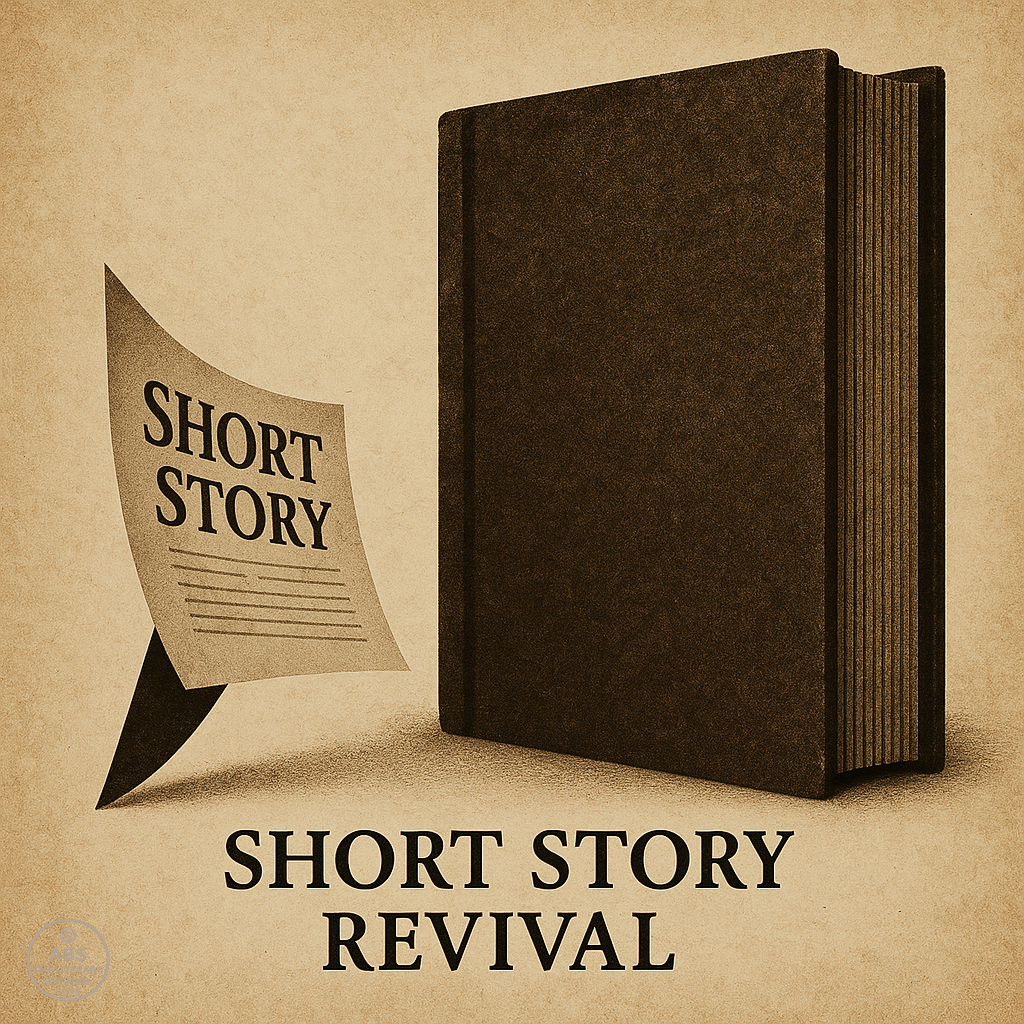
Literature and the Market — The Bestseller Dilemma
“The reader paid attention—and suddenly, the critic panicked.”
In the early 2000s, literature found itself in a paradox. On one hand, it was more visible, accessible, and globally consumed than ever before. On the other, it was increasingly defined by numbers—sales figures, Amazon reviews, Goodreads stars, and airport shelf placements.
As literary fiction wrestled with fractured identity, post-9/11 trauma, and experimental form, something curious happened next door in the bookstore: the mass-market paperback became the cultural blockbuster. The divide between literary value and commercial success was thrown into stark relief—and it wasn’t always flattering to the literary gatekeepers.
The canon, it seemed, had competition. And the competition came wearing dust jackets of embossed gold and scandalous fonts.
Dan Brown’s The Da Vinci Code (2003) exploded across the globe like a thriller-biblical grenade. With pulp pacing, breathless cliffhangers, and questionable theology, the novel infuriated scholars, delighted conspiracy theorists, and seduced millions of casual readers into reading a book at all.
“Everyone loves a secret.”
Brown didn’t pretend to be literary—but his success forced the question: If literature is unread, does it matter? For many readers, The Da Vinci Code was a gateway drug—back into books, into research, into historical imagination. For critics, it was an emergency—proof that a sensational plot could outsell decades of structural subtlety.
And the literary world was forced to contend with a truth it had long tried to ignore: taste is democratic, and the market is louder than the academy.
Then came Stephenie Meyer’s Twilight saga (2005–2008), which did to YA what Brown had done to historical thrillers—turn it into a billion-dollar phenomenon. Vampires shimmered, teenagers swooned, and the literary establishment grimaced. And yet, beneath the sparkle lay a deeper shift: YA had won the cultural war by sheer reader loyalty.
The books were formulaic. But they created community, obsession, and a fierce emotional ecosystem, particularly among young women—a demographic long ignored by literary tastemakers. The success of Twilight birthed its own industry: fanfiction, spin-offs, academic studies, and ironic rereads.
Meyer’s vampires didn’t just drink blood. They drained the elitism from genre walls.
In parallel, Stieg Larsson’s Millennium Trilogy (The Girl with the Dragon Tattoo, 2005, English trans. 2008 onwards) introduced Lisbeth Salander, a bisexual, punk-hacker savant with a photographic memory and a fierce appetite for justice. The writing was cold, journalistic, and often clunky—but the character electrified a generation.
Larsson’s thrillers weren’t elegant—they were angry, procedural, and radical. They attacked corruption, misogyny, and the rot beneath Scandinavian social models. This was crime fiction not as comfort, but as diagnosis. And the market rewarded him posthumously with global stardom.
The message was clear: the people wanted fire.
And then came E.L. James’s Fifty Shades of Grey (2011), originally Twilight fanfiction rebranded into a billion-dollar erotica franchise. It was critically panned, grammatically maligned, and structurally embarrassing. But it sold. Massively.
Why? Because it broke two unspoken literary taboos at once:
Women’s sexual fantasy could be profitable.
Bad prose, marketed well, could make literary purists look absurdly self-important.
And so, the quiet war between art and commerce exploded in full view. Literary festivals whispered. Professors sighed. But readers bought. And James laughed all the way to the bestseller list.
Meanwhile, serious writers began to cross over—intentionally or not.
Khaled Hosseini, with The Kite Runner, wrote emotionally resonant fiction that doubled as international bestsellers.
Jhumpa Lahiri, already respected, found mainstream readerships with short stories that sold in hardcover.
Jonathan Franzen, once dismissive of Oprah’s Book Club, finally relented—and saw his work reach millions.
The result was a new hybrid space—where literary fiction began to embrace readability, and commercial fiction flirted with complexity.
The decade forced a re-evaluation of the oldest literary question:
Can something be both popular and profound?
The answer, increasingly, was: Yes, but it must walk a tightrope between sincerity and spectacle.
The bestseller dilemma became a mirror:
To critics, it reflected their fading influence.
To authors, it revealed the trade-offs between acclaim and livelihood.
To publishers, it confirmed that narrative, not novelty, sells.
To readers, it offered a thrilling truth: You are the canon now.
By 2012, the novel was not just a cultural artefact—it was an economic entity, part of an industry shaped by:
Marketing algorithms
Cover design psychology
BookTok-worthy quotes
And blurbs from celebrities, not critics
The question was no longer, Is this good literature?
It was, Will this survive the feed refresh?
But perhaps, the most literary thing about the bestseller boom was its reminder that:
Literature, like democracy, is messy, impure, and occasionally absurd—but it lives only when people show up.
And readers had shown up. In millions.
In Contemporary Literature 2000–2012
Reflections — What Changed, and What Didn’t
“The book survived the bomb, the byte, and the bestseller list.”
The first twelve years of the 21st century did not merely extend literary history. They complicated its spine, its voice, its format, and its very right to exist. These were years of rupture—political, digital, ecological, emotional—and the novel, the story, the essay, the voice, all bore new wounds and strange new organs.
This was not an era of unity. It was an era of multiplicity, fragmentation, and experimental urgency. Literature did not consolidate—it scattered. It did not resolve—it reflected. It did not protect the reader—it implicated them.
And yet, some patterns emerged—not as doctrines, but as tendencies that defined the spirit of the time.
The “I” took the stage.
Autofiction blurred memoir and fiction. Confession became craft. The narrator, once distant and omniscient, now resembled the author in a mirror—flawed, tired, self-aware. Karl Ove Knausgård, Rachel Cusk, and J.M. Coetzee did not offer protagonists. They offered selves—distilled, dissected, sometimes disowned.
The personal was no longer political—it was political by default.
The world spoke back.
The Anglophone canon was no longer the exclusive property of London or New York. From Nigeria, Pakistan, Haiti, Afghanistan, China, India, Canada, and beyond, global voices did not “join” the literary conversation—they changed its language.
No longer asking for a seat at the table, they brought entire cuisines.
Adichie, Hosseini, Adiga, Hamid, Lahiri, and countless others offered more than diversity—they offered new narrative ethics. Their fiction did not simply represent—it reclaimed.
Genre fiction stormed the gates.
Fantasy, dystopia, sci-fi, and crime no longer lived in airport shelves alone. Margaret Atwood wrote biotech apocalypse with literary prestige. Cormac McCarthy’s sparse post-apocalypse won the Pulitzer. Neil Gaiman mixed gods with strip malls. The dragons returned—but with footnotes.
The age of “literary snobbery” trembled, not because it was defeated—but because reality itself became more surreal than fiction. If the world felt like a bad dream, genre fiction was no longer escapist. It was diagnostic.
Digital storytelling cracked the form.
Blogs, hypertexts, visual novels, Twitter fiction, eBooks, fanfiction archives—the page lost its borders. The novel could now be scrollable, interruptible, responsive. The reader didn’t just read—they navigated.
Even print novels reflected digital consciousness. Danielewski’s House of Leaves and Eggers’ self-aware narration mimicked the chaos of the internet—unreliable, hyperlinked, nonlinear, and haunted by doubt.
The youth rebelled—and readers followed.
Young Adult fiction was no longer a phase. It became a literary spearhead—fueled by dystopia, trauma, revolution, and longing. The rebellion in The Hunger Games echoed class warfare. The Book Thief wept for history. John Green philosophized love and mortality in sentence fragments that teens tattooed.
The adult reader returned—not to supervise, but to witness truth dressed in urgency.
The body reappeared—wounded, gendered, politicized.
Women’s writing in this era was not decorous—it was defiant, bloody, theoretical, and hungry. The body was written in every form: testimony, myth, lyric, scar. From Roxane Gay’s shrapnel fiction to Lahiri’s diaspora ghosts to Winterson’s mythic longing, the body became the most annotated manuscript of all.
And literature learned to bleed again.
The short story returned—sharp, quick, essential.
No longer apprentice to the novel, the short story carved its own cathedral. Saunders, Lahiri, Munro, Díaz—they proved that a few pages could rearrange your sense of self.
In an age of distraction, the short story demanded concentration—and gave revelation.
The market loomed—and literature blinked.
Bestsellers roared louder than critical praise. Dan Brown outsold a decade of Booker winners. Fifty Shades of Grey embarrassed professors and enriched publishers. Twilight became empire. Fanfiction became monetizable. Algorithms joined editors at the publishing table.
And yet, beneath it all, readers still cried. Still paused. Still underlined. The soul of literature proved—again—that even amidst noise, it could still whisper loud enough to survive.
So what didn’t change?
The need to tell stories.
The yearning to be seen in language.
The truth that fiction, however fractured, still carries the moral burden of memory.
And what changed?
Everything else.
Form, tone, access, pace, power, authorship, expectation, politics, identity, medium, and readership all mutated—and with them, the novel re-emerged stranger, deeper, less sure of itself, and more alive than ever.
This was literature at the edge.
Not traditional. Not apocalyptic.
But transitional—a bridge of language across a world in flux.
It no longer offered answers. It offered questions worth reading slowly.
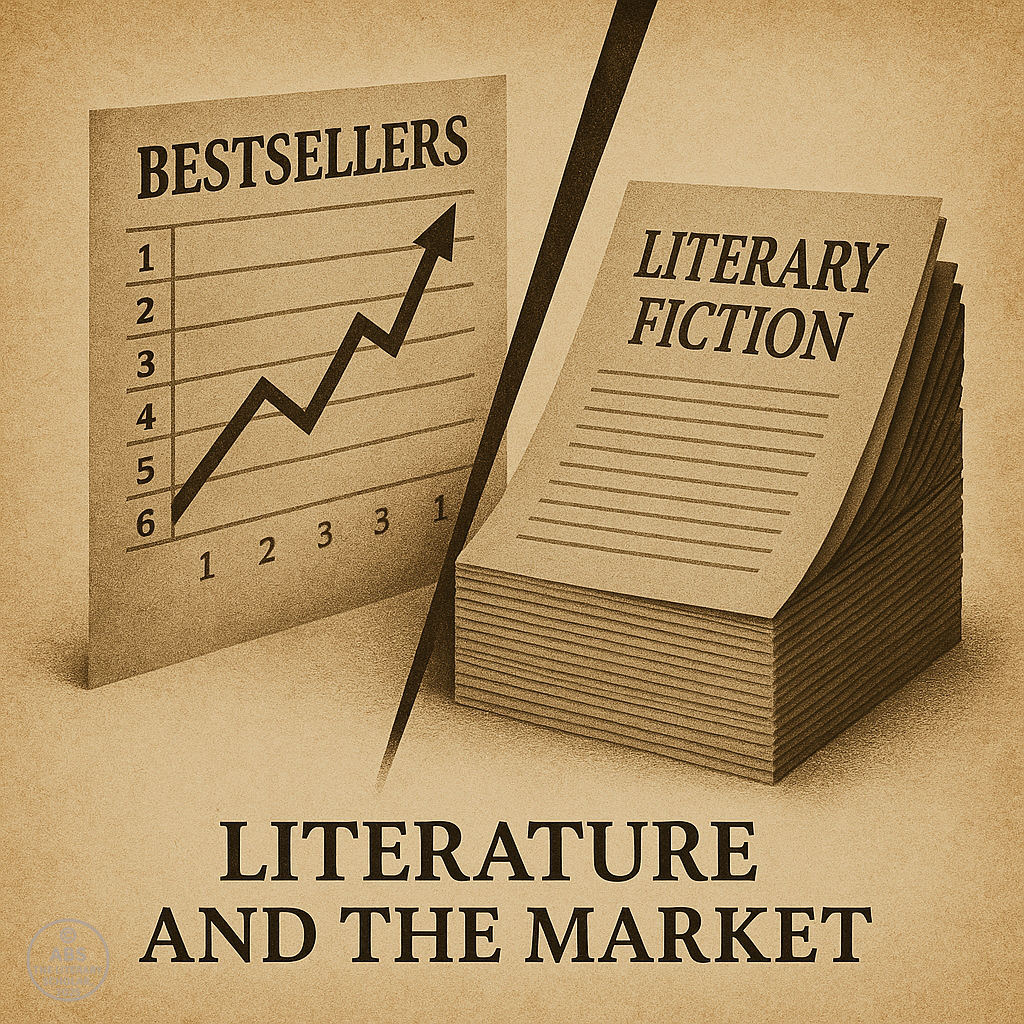
The first twelve years of the twenty-first century demanded that literature evolve not only in content, but in conscience. The page bore witness to a world in freefall—terror, war, migration, digital fragmentation, ecological collapse—and responded with forms that fractured, voices that resisted, and genres that fused with unprecedented boldness.
This was not an era of literary comfort. It was a period of formal disruption, ethical urgency, and cultural decentralization. The canon no longer dictated the terms; the margins spoke, and the centre bent. Fiction responded to crisis not with solutions, but with style. Autofiction turned the self into narrative. Global novels dismantled the imperial gaze. Genre fiction became critique. The short story returned as scalpel. And even amidst commercial noise, literature refused to go quiet.
The contemporary writer was no longer merely a storyteller, but a witness, a chronicler, a reluctant prophet—writing in an age where everyone was speaking, but few were truly heard.
And so Contemporary Literature 2000–2012 endured—not by preserving its purity, but by shattering its own traditions to stay alive.
Share this post / Spread the witty word / Let the echo wander / Bookmark the brilliance
